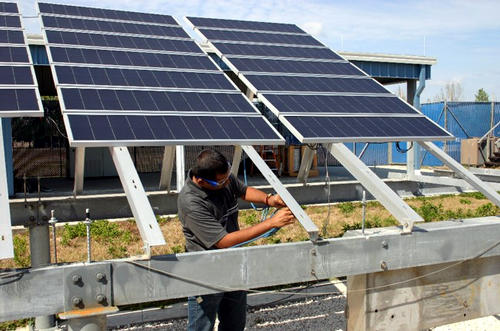Gainesville’s feed-in tariff program is limited to 4 megawatts of solar PV each year. The program is already fully subscribed through 2015 — a 24-megawatt commitment.Photo courtesy U.S. NRELClean energy advocates in Europe have long considered the feed-in tariff as an antidote to the industrial world’s fossil fuel dependency. Now, the United States and Canada are starting to catch on as well.
Feed-in tariffs (FITs) guarantee that anyone who generates electricity from a renewable energy source — whether they are a homeowner, small business, or large electric utility — is able to sell that electricity into the grid and receive long-term payments for each kilowatt-hour produced. Payments are set at pre-established rates, often higher than what the market would ordinarily pay, to ensure that developers earn profitable returns.
The FIT is credited for the rapid deployment of wind and solar power among world renewable energy leaders Denmark, Germany, and Spain this past decade. Similar policies have since been adopted by many other countries, leading the FIT to become the most prevalent tool for promoting renewables.
In North America,... Read more


 An unprecedented heat wave gripped the United States in the summer of 1988. Droughts destroyed crops. Forests were in flames. The Mississippi River was so dry that barges could not pass. Nearly half the nation was declared a disaster area.
An unprecedented heat wave gripped the United States in the summer of 1988. Droughts destroyed crops. Forests were in flames. The Mississippi River was so dry that barges could not pass. Nearly half the nation was declared a disaster area.